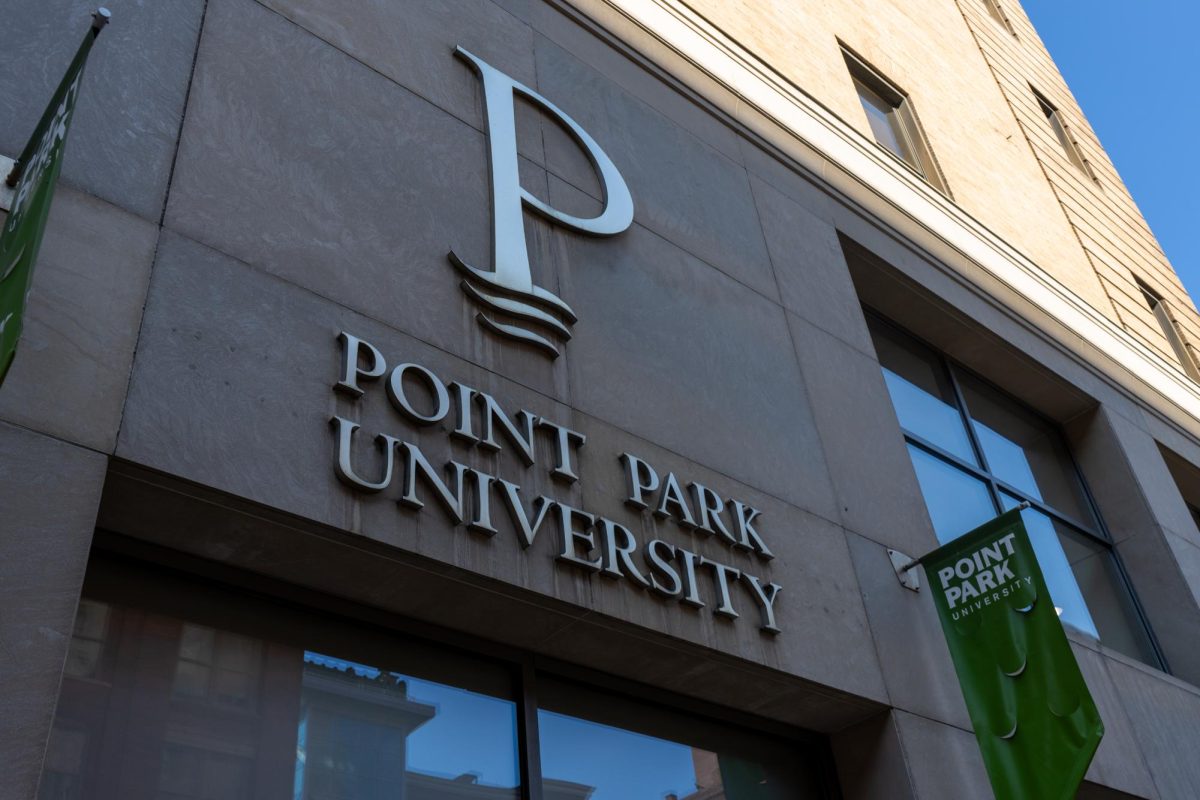Students passing through the Lawrence Hall Lobby last Wednesday may have seen two women, adorned in jewels and colorful veils, balancing swords on their heads and swaying their hips to Middle Eastern music at the second annual Cultural Summit. “I feel that it was as successful as it was last year, and I hope that next year it will continue to grow,” said Amanda Avampato, a coordinator at the International Student Services and Enrollment Office, which sponsored the summit. “I was also very happy to see the diversity of the students that came. We had some international students, we had some ELS students and there were some regular education students.” On Wednesday, Oct. 20, Sadiqa, a belly dancing duo, was just one of the performers at the summit, an event created to spread cultural awareness and bring the different cultures in the Point Park community together. “The style of belly dance we do is a fusion. Tribal fusion is actually something that is native to the United States,” said Kari Merlina, one of the dancers of Sadiqa. “It mixes some flamenco … and a bunch of different styles of dance- a lot of folklore.” Although the origins of belly dance are debated, historians believe that the alluring Middle Eastern dance was established in Egypt, Turkey or Lebanon. “When people think of belly dance, a lot of times they think of Egypt,” Merlina said. “Some speculate that the gypsies brought it from India all the way over to Spain.” Joanna Abel, the other half of the duo, said she always enjoys dancing for an audience. “I get a lot of pleasure out of taking the time to dress up before we go on, and the performance is definitely a lot of fun,” Abel said. “The adrenaline rush is a plus.” Representing South America, a samba ensemble played traditional Brazilian songs using different drums. The members of Timeleza, which translates to “cool drum” in Portuguese, fired up the audience members to clap along or tap their feet to the contagious beats. Several students got out of their seats to dance along to the samba, and one ELS Language Center student, Muhammad Alshahri, was so captivated by the music that he did a backward roll in the middle of the lobby. “It’s very nice. It’s very happy,” Alshahri said about the Brazilian music, which he identified as being similar to certain types of music in his home country of Saudi Arabia. John Wuycik, a member of Timbeleza who helped to start the group in March 2006, said he always enjoyd performing Brazilian beats. “I really like the music,” Wuycik said. “I like the performances, particularly when people get up and dance for us – that’s my favorite part.” Since the promotion of cultural exchange is included in Timbeleza’s mission statement, Wuycik believes that playing Brazilian music for audiences such as Point Park is a great way to introduce people to new experiences. “I think it’s important to learn about cultures. It’s valuable and personally rewarding as well,” Wuycik said. “I just love music, period, and am particularly interested in music from other cultures.” Two students also shared their cultures by singing their national anthems in their native languages. Johanna Vieira performed the anthem of Venezuela, and Aziz Alhamdan sang an ode to Saudi Arabia. IMPULSE also returned to the summit this year to perform an upbeat hip-hop routine. Also attracting a long line of students was a smorgasbord of ethnic foods from local Pittsburgh restaurants, representing six different countries. The buffet included samples of Turkish baklava from R&B’s, Peruvian fried plantains from Chicken Latino and Italian bruschetta from Buon Giorno Café. Students could also have intricate designs imprinted on their hands at a booth for mehndi henna tattoos – a cultural tradition in India. Other booths were set up for students to receive their names in Japanese, Chinese or Arabic calligraphy. “I was trained to do the Japanese calligraphy since I was six. It’s so alien to a lot of American people,” said Shiori Saito, an international student from Japan. “Calligraphy is a big part of our culture that we usually do when we are little.” Helping with the Arabic calligraphy booth, Amal Nemengani, a member of the Support Committee for Saudi student clubs around the United States, believes the Cultural Summit helps to display her culture, as well as all other cultures, in a positive light.
Breaking News











